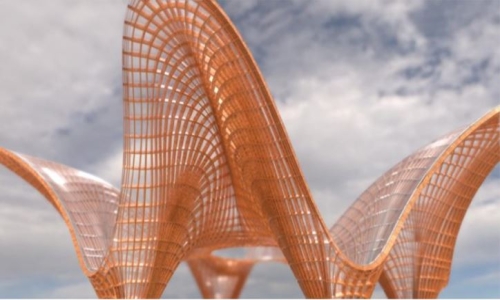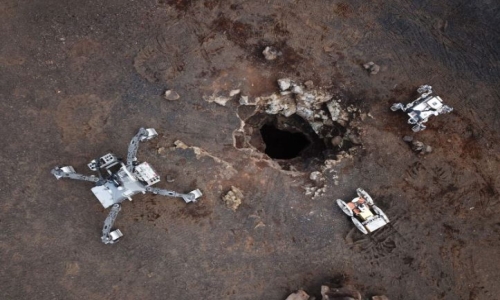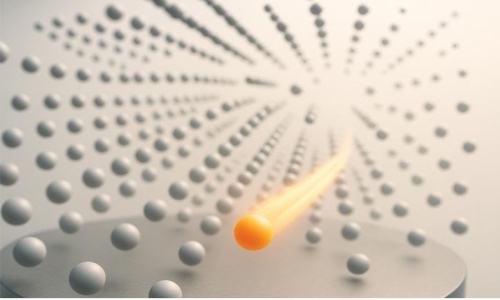


 11:11:47
11:11:47  2024-02-19
2024-02-19  1194
1194

Only some animals are known to fathom object permanence – the idea that something still exists even when it's out of sight.
Oriental pied hornbills (Anthracoceros albirostris) are one of the few with an advanced understanding, a new study confirms. It's a clever skill that comes in handy when nesting females seal themselves out of sight in tree hollows, relying on their mate to bring them food.
To lay and tend to their eggs in safety, female Oriental pied hornbills brick themselves into their refuge with dollops of mud, poop, saliva, fruit, and bark. They leave only a narrow slit for the males' food deliveries.
For any offspring inside to survive, male hornbills must understand that their mate still exists even when they can't see them.
"From an evolutionary perspective, the ability to represent other animals and objects when they are out of sight provides great adaptive advantages in activities such as foraging and avoiding predation," National University of Singapore psychologists Ruitong Yao and Elias Garcia-Pelegrin explain in a new paper.
Yet, aside from notoriously clever corvids and cheekily smart parrots, no other birds were previously known to have object permanence to the same extent as primates. While other bird species have been tested, they only made it to stage four of the six developmental stages seen in human children.
To see how advanced hornbills' object permanence skills are, Yao and Garcia-Pelegrin put six of the large-beaked birds to the test.
They taught the hornbills to indicate where a visible treat is with a peck. Then, the birds were moved onto a series of challenges, which tested for increasingly difficult levels of object permanence.
At stage five, the birds watched a reward get placed under one cup, then moved to another cup. By indicating the cup that the treat ended up in, the birds demonstrated an understanding of visible displacement.
All six birds tested by researchers were able to achieve this level of object permanence, receiving the treat as a well-deserved reward.
But only three of the hornbills made it to stage six: invisible displacement. For this stage, the birds did not get to see the treat move from one cup to another. Instead, the treat was hidden under a small, red box and then moved underneath a larger cup. When the red box was taken out from underneath the cup and shown to be empty, some birds figured out that the treat must have been left behind under the last cup, even though they didn't directly see it happening.
"Understanding invisible displacement is more intricate, involving the integration of various cognitive skills, including memory, spatial reasoning and logical inference," write Yao and Garcia-Pelegrin.
Interestingly, the three birds that did not make it past the fifth stage of object permanence had no breeding experience. This may just be a coincidence, as only six birds were tested, or it might indicate that more advanced levels of object permanence can be learned from the experience of feeding or receiving food from a mate.
"To the best of our knowledge, Oriental pied hornbills are the first bird species outside of the corvid and parrot families to display object permanence levels comparable to apes," Yao and Garcia-Pelegrin confirm.
The team's findings suggest that hornbills may be an overlooked group of highly intelligent bird species. Further research is now required to see if this species of bird has other cognitive abilities that also rival those of parrots and corvids.
Reality Of Islam |
|

Choosing th

A new NURBS

A research

Researchers
 9:3:43
9:3:43
 2018-11-05
2018-11-05
10 benefits of Marriage in Islam
 7:5:22
7:5:22
 2019-04-08
2019-04-08
benefits of reciting surat yunus, hud &
 9:45:7
9:45:7
 2018-12-24
2018-12-24
advantages & disadvantages of divorce
 11:35:12
11:35:12
 2018-06-10
2018-06-10
 6:0:51
6:0:51
 2018-10-16
2018-10-16
 12:47:1
12:47:1
 2022-12-20
2022-12-20
 10:43:56
10:43:56
 2022-06-22
2022-06-22
 3:18:29
3:18:29
 2022-12-24
2022-12-24
al-hussain (peace be upon him)
 10:18:1
10:18:1
 2022-09-21
2022-09-21
 2:34:48
2:34:48
 2022-01-18
2022-01-18
 7:6:7
7:6:7
 2022-03-21
2022-03-21
 9:39:36
9:39:36
 2022-12-28
2022-12-28
 5:41:46
5:41:46
 2023-03-18
2023-03-18
| LATEST |